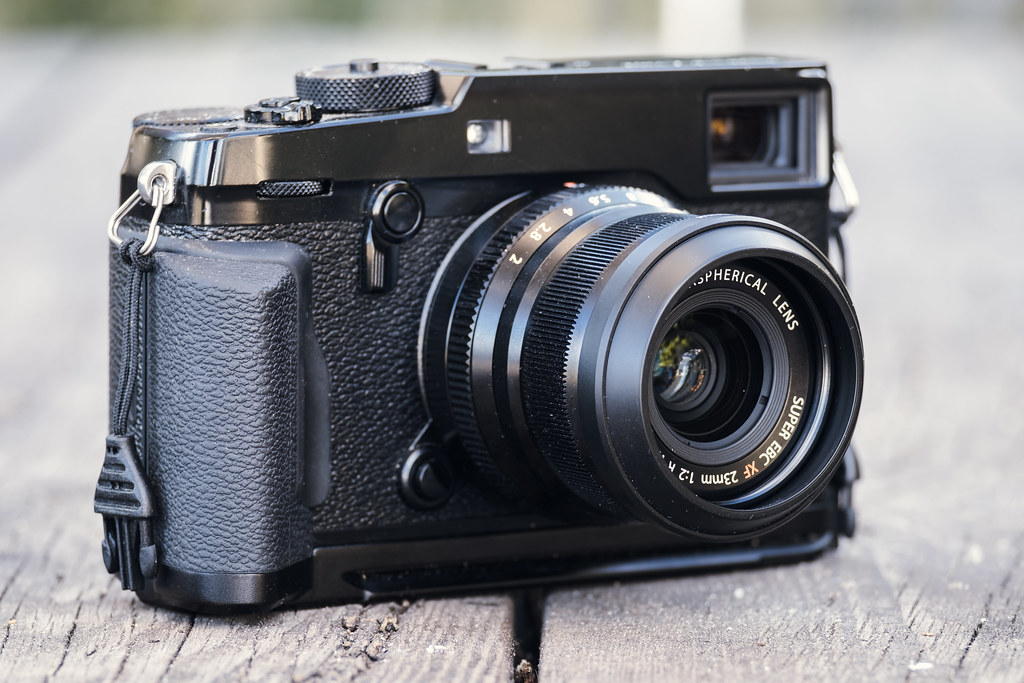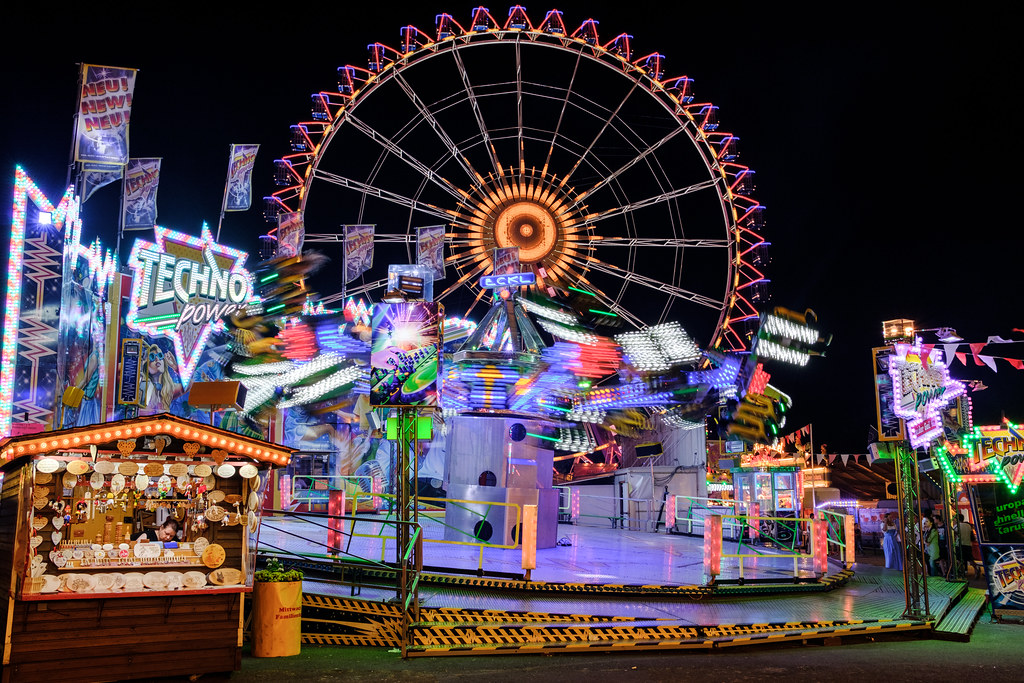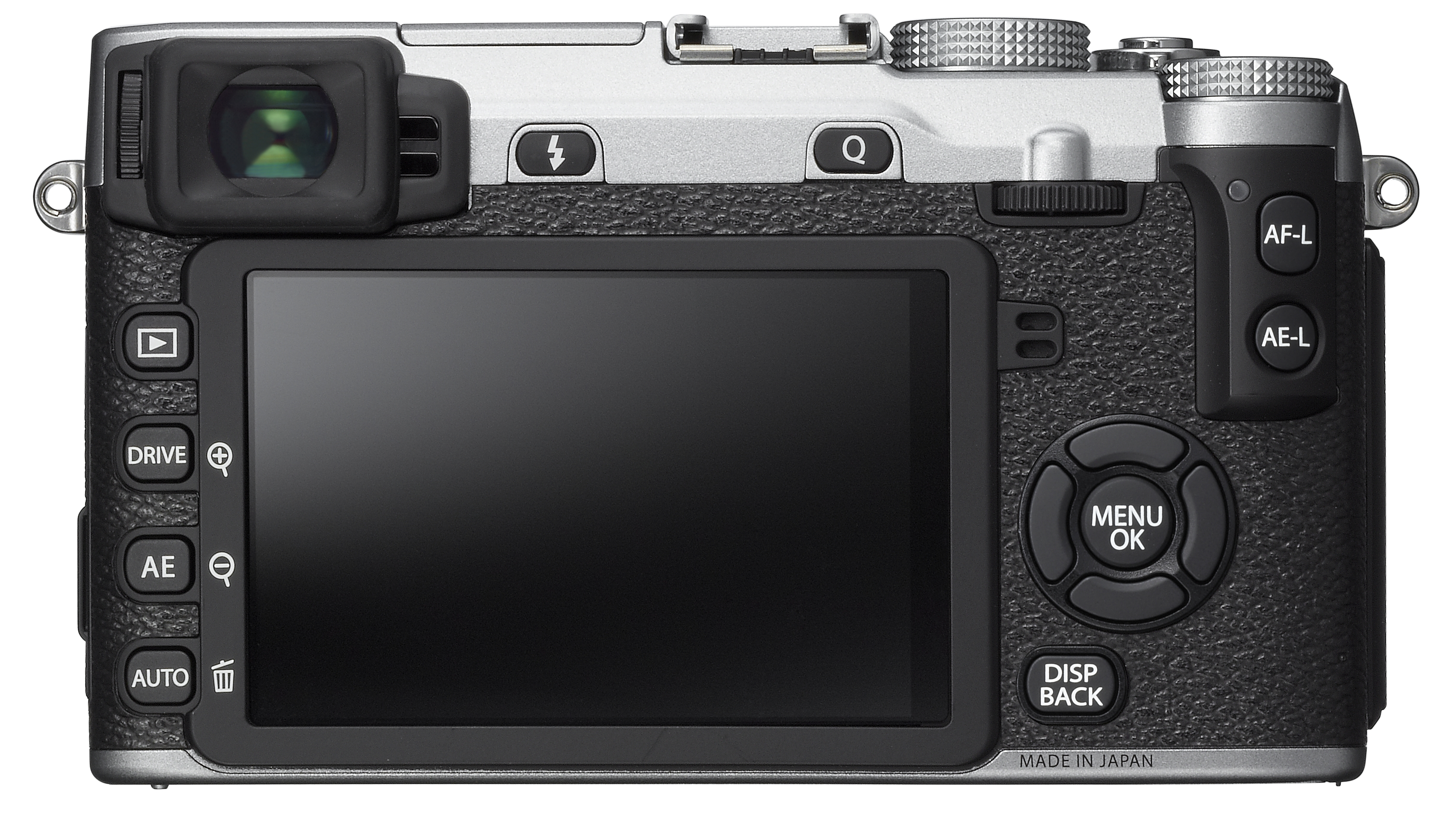Uncategorized
It’s here: Fuji X Secrets – the book
 Happy New Year – it’s finally here: Fuji X Secrets, Rico Pfirstinger’s most comprehensive and insightful book on the Fujifilm X series. With 142 tips and more than 250 figures on almost 400 pages, it will tell you everything you always wanted to know about X, but were afraid to ask.
Happy New Year – it’s finally here: Fuji X Secrets, Rico Pfirstinger’s most comprehensive and insightful book on the Fujifilm X series. With 142 tips and more than 250 figures on almost 400 pages, it will tell you everything you always wanted to know about X, but were afraid to ask.
Fuji X Secrets is the written equivalent of Rico’s popular Fuji X Secrets workshops. It covers all X series cameras from the classic X100 to the state-of-the-art X-T3 and GFX. You will learn previously unknown facts and gain indispensable insights that will help you make the most of your X series camera.
Fuji X Secrets is the result of seven years of in-depth research and experience with X series cameras, and of four years conducting advanced X series workshops in Europe, North America and Asia. It also builds on nine popular camera books that Rico has written on various X series cameras.
Fuji X Secrets is available as an eBook (PDF, iBook & Kindle, you get all three formats together) and as a print edition. Both can be ordered here. There’s also a combo offer that combines the eBook and the print edition.
Click here for more information, comprehensive reading samples (188 free PDF pages) and to order the eBooks, print edition or eBook/print combo, all with a hefty 40% discount. To secure and apply your 40% discount, make sure to enter coupon code XPERT40 during checkout.
Inside the Fujifilm GFX 50S
Thinking Big
by Rico Pfirstinger
Fujifilm expands to medium format, and people have questions: How fast is it? What about shutter shock? What kind of sensor is there? Is there a touch-screen display? What’s the resolution of the EVF? What about leaf-shutter support? Are the lenses optically corrected? And what about video? This report will help you out…
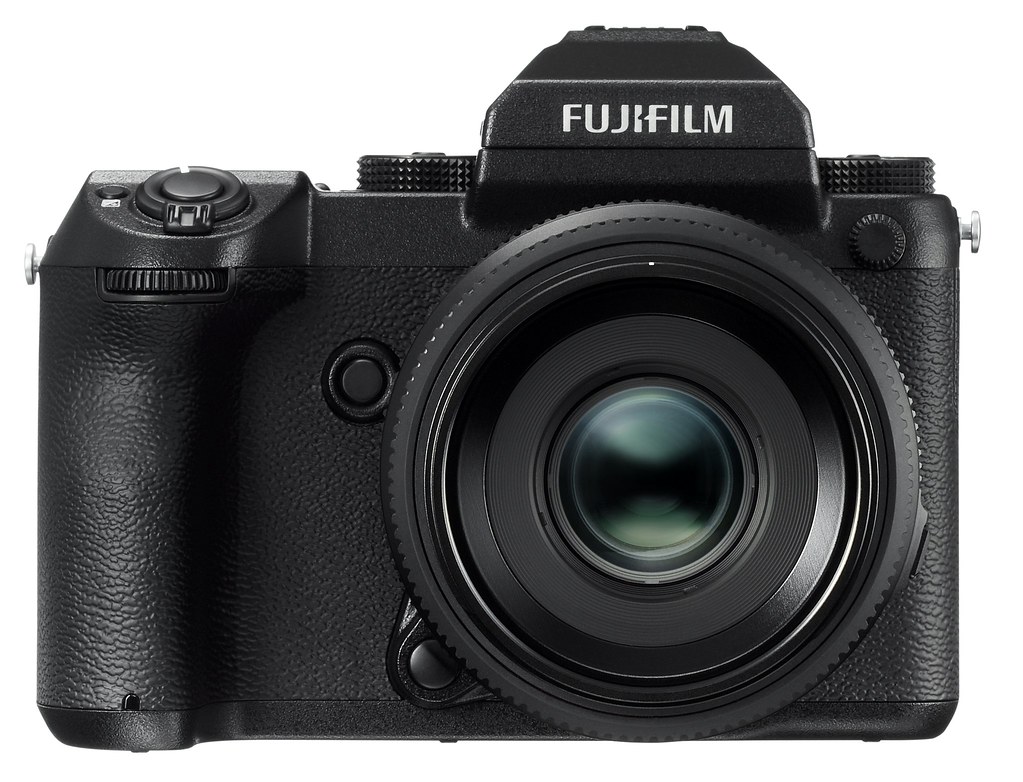
The mirrorless Fujifilm GFX 50S digital medium format camera features a 43.8 × 32.9mm sensor („G Format“) with 51.4 megapixels. The body and three Fujinon GF lenses will be available in spring, with three more lenses arriving later in 2017. The sensor is based on a Sony CMOS sensor that is known from similar offerings like the Hasselblad X1D. However, Fujifilm was able to incorporate several tweaks und improvements concerning the sensor’s light collecting ability and efficiency.
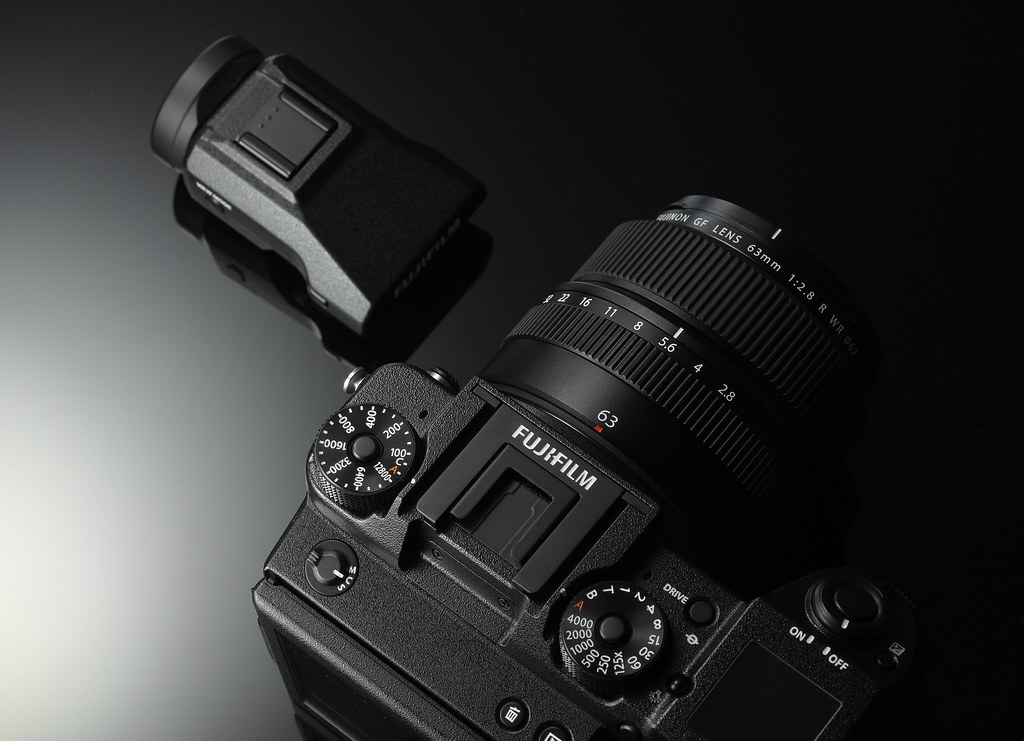
With a detachable EVF and a design that wants to build a bridge between the classic X series and modern cameras, the mirrorless Fujifilm GFX 50S was without a doubt the most exciting camera announcement as this year’s Photokina show in Cologne, Germany
Sensor and Processor
The sensor is using a traditional Bayer color filter array without an optical low-pass filter, and its 51.4 megapixels can be adapted to various aspect ratios, including 4:3 (default), 3:2, 1:1, 4:5, 6:7 and 6:17. Electronic First Curtain (EFC) and Electronic Shutter (ES) are yet to be implemented, but will most likely be part of the final product. Video will be available in Full-HD with 30 fps. Beware of rolling shutter, though!

The new 43.8 × 32.9mm sensor in the GFX 50S offers a resolution of more than 50 MP collects about four times the amount of light as Fuji’s APS-C sensors. The new G mount features a staggering number of twelve electronic lens contacts. What seams like overkill will most likely be very useful when it comes to adapting third-party lenses.
The GFX 50S uses the same X-Processor Pro imaging processor that is found in the X-Pro2 and X-T2. Since the sensor only supports contrast detection autofocus (CDAF), efficient AF algorithms are all the more important. The GFX 50S prototypes we tested behaved surprisingly snappy, and the best results can be achieved with lenses that feature inner focussing (IF). Sadly, among the six initial lenses, only the GF32-64mmF4 R LM WR zoom lens falls in that category. The start-up time of the camera is pleasingly short and comparable to other current X series models. However, the shooting intervals will be longer, with a number of 700 ms currently floating around. Den Rest des Beitrags lesen »
Erste Eindrücke: Das Fujinon XF23mmF2 R WR im Test
Der perfekte Kompromiss?
von Rico Pfirstinger
Nach dem erfolgreichen XF35mmF2 R WR bringt Fujifilm mit dem XF23mmF2 R WR eine zweite wetterfeste Festbrennweite mit mittlerer Lichtstärke auf den Markt.
Ihre Kegelform prädestiniert diese kompakten Objektive für die X-Pro2, die Mehrzahl der Benutzer dürfte sie jedoch an weniger exotischen Kameras wie der X-T10, X-T1, X-E2 und X-T2 verwenden.
Was Sie beim XF23mmF2 R WR erwartet – auch im Vergleich mit dem teureren XF23mmF1.4 R und der klassischen X100T –, verrät Ihnen unser kleiner Testbericht.
Kegel Reloaded: Das XF23mmF2 R WR (hier mit der mitgelieferten Kunststoff-Streulichtblende) macht an der X-Pro2 eine gute Figur. Wie schon das XF35mmF2 R WR wurde auch dieses Objektiv so entworfen, dass der Tubus nicht in den Bildrahmen des optischen Suchers hineinragt.
Überraschung! Das neue XF23mmF2 R WR ist eigentlich gar kein 23mm-Objektiv. Tatsächlich verfügt es über einen Bildwinkel, der über den des teureren XF23mmF1.4 R (und den des in der X100-Serie fest eingebauten 23mm-Objektivs) etwas hinausgeht. Die identischen Bildwinkel-Angaben in den offiziellen technischen Spezifikationen sind also irreführend, genügen laut Auskunft aus Tokio jedoch angeblich dem CIPA-Standard. Aha.
Weniger ist mehr: Dieser buchstäblich mit dem Rücken zur Wand gemachte Schnappschuss wäre mit dem kleineren Bildwinkel eines „normalen“ 23mm-Objektivs (etwa dem XF23mmF1.4 R) nicht möglich gewesen.
Die großzügige Spezifikation mag hierzulande für Stirnrunzeln sorgen, vielen Benutzern dürfte der größere Bildwinkel des neuen Objektivs jedoch entgegenkommen, schließlich eignet sich das XF23mmF2 F WR aufgrund seiner geringen Größe, der wetterfesten Ausführung und des blitzschnellen Autofokus (bis zu 0,05s) besonders gut für Reportage und Street-Fotografie – also Genres, bei denen es gerne etwas mehr Weitwinkel sein darf. Das Objektiv bietet sich außerdem für die Reise- und Landschaftsfotografie an, sodass wir es auch bei unserem im November und Dezember 2017 stattfindenden Fuji X Secrets Ultimate Workshop in Neuseeland einsetzen werden. Den Rest des Beitrags lesen »
X-E2 vs. X-E2S: Ending the Confusion
By upgrading your Fujifilm X-E2 with firmware 4, you are giving up the camera that you knew: Your X-E2 will turn into an X-T10—only with a rangefinder design. However, on the inside, both the X-E2v4 and the new X-E2S offer (almost) the same features, the same menu options and the same graphical user interface as the X-T10.
 This is important. To begin with, it means that your old X-E2 user manual has become pretty much obsolete. That’s why Fujifilm has created an entirely new manual along with firmware 4. You can download it here as a PDF file. It also means that my eBook on the X-E2 doesn’t apply to cameras running firmware 4 or the new X-E2S. It’s still great if you don’t upgrade your X-E2, but users who have made the jump are now much better off with my book on the X-T10.
This is important. To begin with, it means that your old X-E2 user manual has become pretty much obsolete. That’s why Fujifilm has created an entirely new manual along with firmware 4. You can download it here as a PDF file. It also means that my eBook on the X-E2 doesn’t apply to cameras running firmware 4 or the new X-E2S. It’s still great if you don’t upgrade your X-E2, but users who have made the jump are now much better off with my book on the X-T10.
I am not kidding! As long as you can see beyond the different form factors (rangefinder style vs. SLR style), my X-T10 book is now almost perfectly applicable. It really is, because Fuji did a terrific job transforming the X-E2 into an X-T10 with camouflage. This means that my X-E2 eBook won’t be updated. It doesn’t have to, because the update is already here. To ease the transition, my publisher will give you a discount of 40% on all editions of my X-T10 book (printed, eBook and combined). Simply enter XPERT40 in the coupon field when you check out.
Same Same, But Different
Okay, so your X-E2 is now a rangefinder-style version of the X-T10. Great! But what exactly are the differences between an X-E2 running firmware 4 and the new X-E2S? There seems to be some confusion, so let’s straighten it out.
X-E2 vs. X-E2S
On the outside, the differences are minimal. The X-E2S offers an „improved“ hand grip, but to be honest, I can’t feel much of a difference. However, pressing the four selector buttons on the back of the X-E2S does feel better, so this may be another small improvement over the classic X-E2. With firmware 4, you can forget the MACRO and AF descriptions on two of the X-E2’s selector buttons, as all four selector keys now serve as Fn buttons, just like in the X-E2S. This gives both cameras a total of 7 Fn buttons! Den Rest des Beitrags lesen »
Fujifilm X-Pro2 & Adobe Lightroom: ein fast perfektes Paar
 Das gilt zumindest dann, wenn es um Fuji-Farben geht, denn Adobe hat die Genauigkeit der Fujifilm Filmsimulation in Lightroom für die X-Pro2 (und nachfolgende Modelle mit X-Processor Pro wie die X-T2, X-T20, X100F und GFX 50S) sichtbar verbessert: Farben und Gradation von Provia, Astia, Velvia, Classic Chrome, Pro Neg. Hi/Std, Monochrome und Acros stimmen nun fast perfekt mit ihren JPEG-Pendants direkt aus der Kamera überein.
Das gilt zumindest dann, wenn es um Fuji-Farben geht, denn Adobe hat die Genauigkeit der Fujifilm Filmsimulation in Lightroom für die X-Pro2 (und nachfolgende Modelle mit X-Processor Pro wie die X-T2, X-T20, X100F und GFX 50S) sichtbar verbessert: Farben und Gradation von Provia, Astia, Velvia, Classic Chrome, Pro Neg. Hi/Std, Monochrome und Acros stimmen nun fast perfekt mit ihren JPEG-Pendants direkt aus der Kamera überein.
Dies ist eine deutliche Verbesserung gegenüber den Profilen für ältere Kameras mit EXR II-Prozessor, bei denen insbesondere dunkle Schattenpartien abgesoffen sind.
Überzeugen Sie sich selbst! Ich habe dazu ein privates Flickr-Album vorbereitet: https://www.flickr.com/gp/ricopfirstinger/6y60X7
Das Album zeigt SOOC JPEGs and ihre Lightroom-Entsprechungen für alle 15 Filmsimulationen in der X-Pro2. Sie können die Ergebnisse also direkt vergleichen.
Wenn Sie mehr über das Aufnahmen und Bearbeiten von RAW-Dateien erfahren möchten, empfehle ich Ihnen unsere Fuji X Secrets RAW-Wochenendworkshops in Nürnberg/Schwabach.
